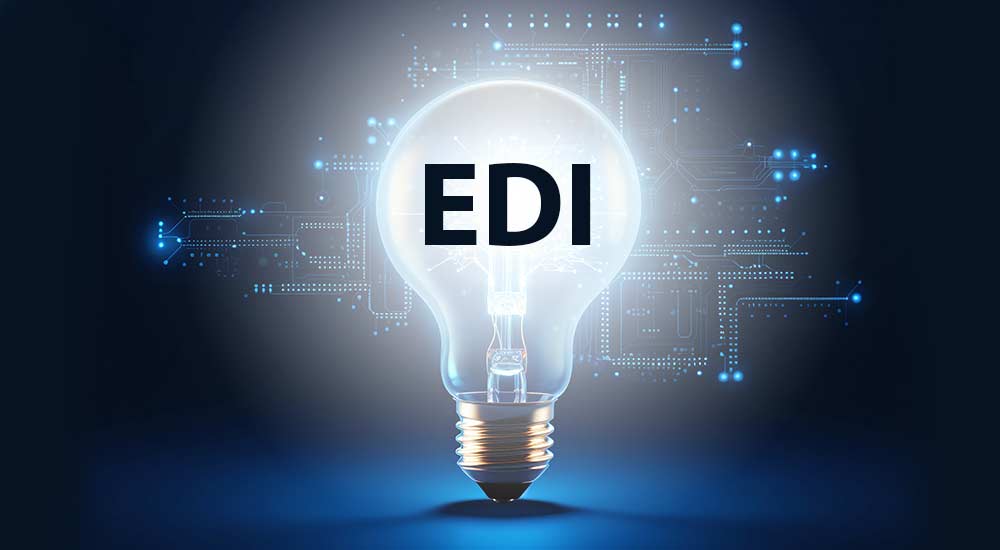Electronic Data Interchange (EDI) is an essential technology for exchanging transactional data between business partners, also known as Trading Partners in the EDI community. From orders, invoices, and advance shipment notifications to benefit enrollments, claims processing, and payment authorizations, numerous industries depend on EDI solutions to support critical business processes.
But EDI comes with unique challenges.
How do you choose the right technology to fit your expected transaction volume?
How do you integrate EDI to your backend systems? If you already have an EDI solution that’s giving you trouble, how do achieve the end state you need?
The key here is to get the right expertise on your side. This is the best way to avoid common pitfalls in EDI. Here are the 7 biggest pitfalls that we see frequently.
1. Not considering the future state of EDI (and potential technical debt)
Midmarket organizations often take a self-service approach to EDI. Rather than engaging a strategic partner to deliver the technology, the organization moves forward with one staff member (or a small team) scoping EDI requirements, implementing the solution, and then supporting it.
Unfortunately, this approach often leads to problems such as technical debt and risk. As IT teams turn over, multiple people leave their fingerprints on systems and cybersecurity controls. Documentation, if any, may not match reality—which means no one is at the helm of your EDI technology stack.
As this trend continues, data integration becomes brittle and hard to support which may lead to broken integrations resulting in disrupted or halted business processes. In addition to the operational impact, the cybersecurity and compliance implications are even more concerning. The more bespoke the controls, the more attention the organization must place on maintaining these controls. As systems go unattended due to staff turnover and lack of expertise, EDI infrastructure increasingly becomes vulnerable to cyberattacks and findings within annual compliance audits.
This is a tragedy—especially because it’s so preventable. The key is to model the future state of your EDI program while seeking to avoid technical debt. A managed service provider can bring this type of expertise to your organization, ensuring your EDI technology won’t become a liability down the line.

2. Not engaging an EDI expert to meet the requirements of trading partners
No doubt about it, EDI is tough for organizations that haven’t implemented it before. EDI has its own world of terms and functions that mirror familiar business processes—but also seem to work differently.
It gets more complicated when a specific trading partner like Walmart or Target is driving your adoption of EDI. Even if you succeed in getting clear EDI requirements from a partner, how do you make sense of them? How do you translate them into the context of your business—and how do you map those technical requirements to your internal processes?
The key here is to engage an EDI expert to guide you on this journey. You want a partner with deep experience in EDI, who can relate your trading partners’ technical requirements to your unique business processes.
3. Not planning for future trading relationships
Most organizations get into EDI because a significant trading partner requires it. Without EDI, you can’t do business with them.
That’s a great driver, and you should do what it takes to create a strong relationship with that partner. But you don’t want to lock yourself into a solution that can’t grow with you.
Specifically, you don’t want to ignore the potential revenue and efficiency gains that EDI could provide for all relevant partners.
Maybe there are two great technology options to satisfy your biggest trading partner—yet only one of those options will work for a large portion of your Tier 2 customers. If your chosen solution covers both sets of requirements, you’ll create a more future-proof EDI program.
Unfortunately, many organizations don’t realize this when they dive into EDI. It’s easy to focus on that big trading partner without doing a full audit of your EDI opportunity across all partners.
Once again, an EDI expert can help you make these strategic decisions. They know the technology inside and out, and they can guide you to that perfect-fit solution that satisfies your biggest partner today—and additional partners tomorrow.
4. Not understanding the difference between VAN and point-to-point
This pitfall is related to the previous one.
If you’re only going to interact with one or two partners, then point-to-point connections may be the right option. Under this model, you need a discrete EDI solution to connect to each trading partner. It’s a viable choice if you’re working with very few partners.
However, there’s a challenge here. Each point-to-point EDI connection is a separate system from every other point-to-point connection. Each one requires its own support. As you add more partners, each with its own point-to-point connection, your support costs will scale linearly alongside your growing number of EDI partners.
The alternative here is a VAN (value-added network). This is a secure EDI network that supports connections with numerous partners. It’s managed and supported by a third party, which eliminates the “spaghettiware” support problem for internal IT teams managing multiple point-to-point connections.
As with anything in EDI, there’s no right answer for every company. It depends on how many partners you plan to trade with and what they require.

5. Choosing the wrong cost model for EDI
For some organizations, an on-premises or managed fully integrated EDI solution—whether using a VAN or point-to-point—does not make sense. Perhaps the upfront cost is too high, or the expected transaction volume is too low to justify the investment.
In this case, a web-based EDI system may make more sense. This is a SaaS (software as a service) solution for processing EDI documents. It has all the benefits and drawbacks associated with SaaS. The solution is cost-effective to launch, but the per-transaction cost is higher, which can hurt if your EDI program experiences significant growth. A web-based solution also isn’t integrated to your backend systems.
At the other end of the spectrum, you have fully integrated solutions (like point-to-point and VAN). These models typically have a higher upfront cost, but higher transaction volumes over time will drive down the overall cost per transaction.
Again, there’s no right answer for every company. It depends on the expected EDI transaction volume and the preference for higher or lower upfront costs.
6. Not accounting for your technical support needs
There’s no way around it—EDI is a niche technology. It takes experience and expertise to design a solution that supports existing processes with the most efficient technical engineering.
Unfortunately, EDI experts are hard to come by. They’re in demand because the technology is so central in so many industries. If you decide to hire EDI experts in-house, you may encounter additional challenges from staff turnover. Whenever an expert departs, you’re back at square one.
A good MSP (managed IT services provider) can solve this issue. Ideally, your MSP should take ownership of the technical side, including ongoing support and documentation. If there’s a data issue or a processing issue in your EDI environment, you need someone who understands both the business process and the technical nature of EDI to resolve it. This ensures you get stability in your EDI program—so staff turnover doesn’t disrupt the business.
7. Not accounting for your backend integration needs
EDI doesn’t exist in a vacuum. It needs to communicate with your backend systems.
Typically, this means your ERP system—whether it’s Sage, SAP, NetSuite, or another solution. You may have technical resources who understand your ERP, whether they’re on staff or outsourced; but these professionals typically aren’t familiar with EDI.
To solve the integration challenge, you need an EDI partner who knows your backend system as well as EDI. This partner should be able to map your existing business processes into EDI transactions that represent those processes accurately in technical EDI terms.
The right EDI partner will understand how important it is not to reengineer your existing business processes. Rather, your EDI provider will map those processes into effective EDI workflows. This way, your trading partners get what they need—and your internal processes don’t get rewritten overnight.
How do you avoid these pitfalls?
As you can see, EDI is a complex undertaking. It requires technical knowledge of EDI protocols and best practices—plus deep understanding of your unique business processes.
The best place to find this expertise is an experienced EDI practitioner. Look for a company that thoroughly understands EDI, your industry, and your unique requirements. This is the most effective way to delight your trading partners, preserve your internal processes, and lower your cost of doing business. That’s what we’re all about here at Corsica Technologies.

Want to learn more about EDI for your organization?
Reach out to schedule a consultation with our EDI specialists.







